Tom Clancy’s The Division is Ubisoft Massive’s first foray into the open-world RPG shooter landscape and the company has put a tremendous amount of work into this new franchise. The Division has some huge shoes to fill as the hype for this game started back in 2013 when Ubisoft announced the new title at E3. So does this game, graced with the Tom Clancy pedigree, live up to the expectations? Let’s find out.
First it should be made note of the name itself. Tom Clancy games have been known for realism in the way of how guns shoot, how bullets fly, and the ability to take down enemies with a well placed headshot. Only two of those statements are fulfilled in The Division as Ubisoft said that it’s a RPG first and foremost. After going through the experience of putting multiple clips into enemies and seeing the hit stats bounce off them as bullets registers I can definitely confirm that it is a RPG.
The RPG elements inside of the weapons, armor, gear slots, level systems, and perks is impressive. Early levels are seen reaching for the next level of gear that can increase the impact of Weapon DPS, Health, and Skill Power. Every new piece of gear increases stats in Firearms, Stamina, and Electronics which are the base stats for the total skill numbers.
Increasing the base stats unlocks different talents on guns and most talents are activated when agents reach the higher levels. There is even a ‘recalibration’ feature where players can re-roll stats for armor. This is such a smart feature and once I reached level 30 I found myself at the recalibration station customizing new gear to fit my play style.
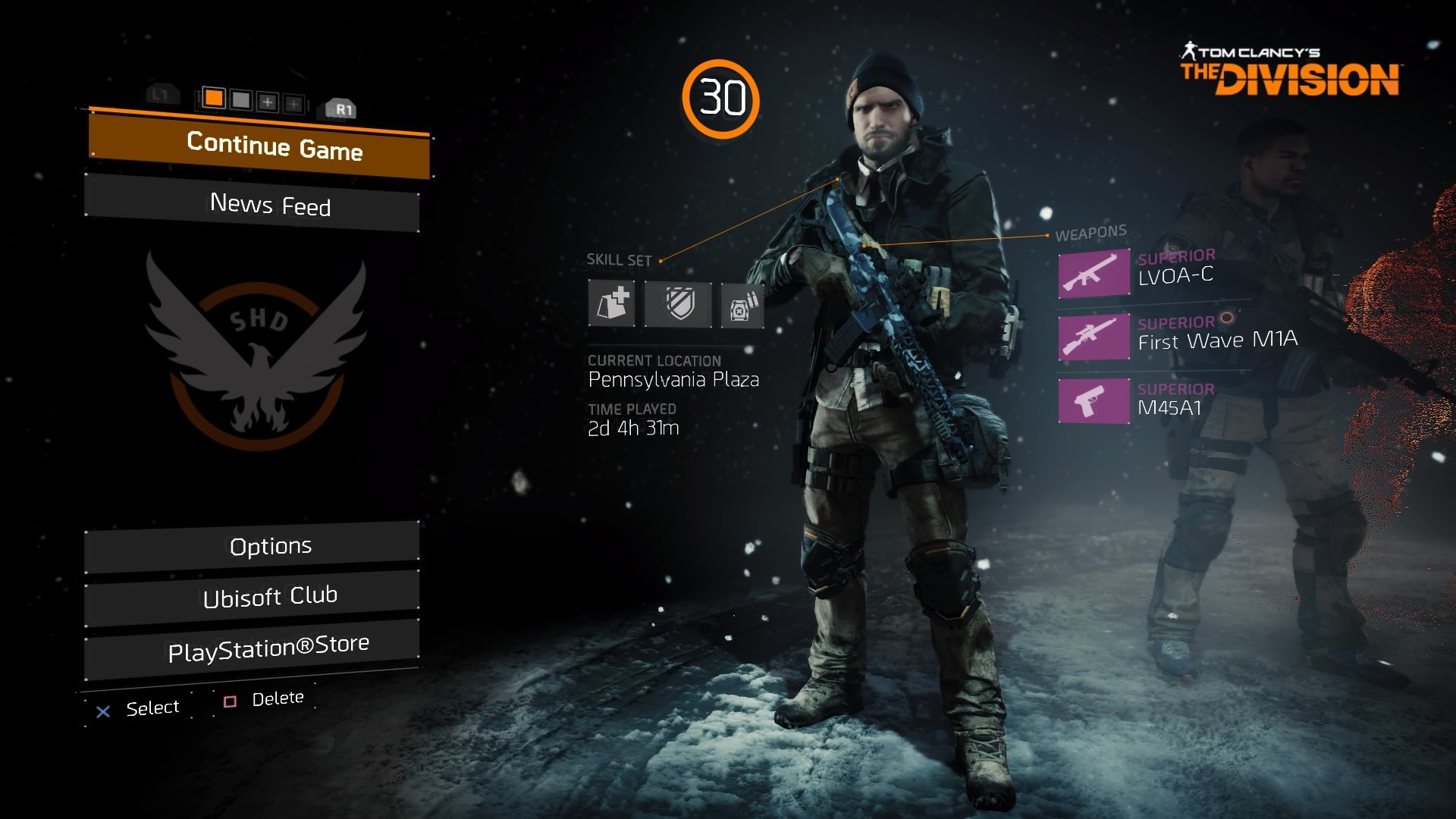
Gun progression throughout the game feels smooth as early weapons tend to be unruly while later weapons with higher end mods feel more stable and fire in tight bullet patterns. The bullet recognition is great and each bullet lands on objects well. If a player fires at a car window, the bullet will fly through both sides of the car and land on a wall in the background.
The Division has much more detail to it than bullet trajectory and I was constantly reminded of those little details in different moments as I played throughout the game. Everything from how a water bottle sways on the agent’s bag to how the agent aims from cover is impressive. If characters are on the edge of cover they will peek around the side of it while if they are in the middle of cover they will pop up from it to shoot. Even if enemies flank around the agents, they will still stay in cover, lean back against it, and fire at the enemies while crouching down. That granular level of detail is impressive.
The visual detail in this game is top notch. When looking over the shoulder during aiming it’s hard not to admire the detail on the clothing and the weapons. The detail of the world is great. From forgotten DOT signs littered across the streets to cars left with their doors open, the setting that Ubisoft Massive created demonstrates how an abandoned city would feel after an epidemic.
Dynamic weather effects are a beautiful addition to the game as running through the fog completely limits visibility and standing in a snowfall for a short amount of time produces a dusting of snow across the agent’s hat, shoulders, and backpack. Day and night cycles feature a dusk that floods the map with a golden glow and shadow effects move across the streets as the sun pans across the sky.
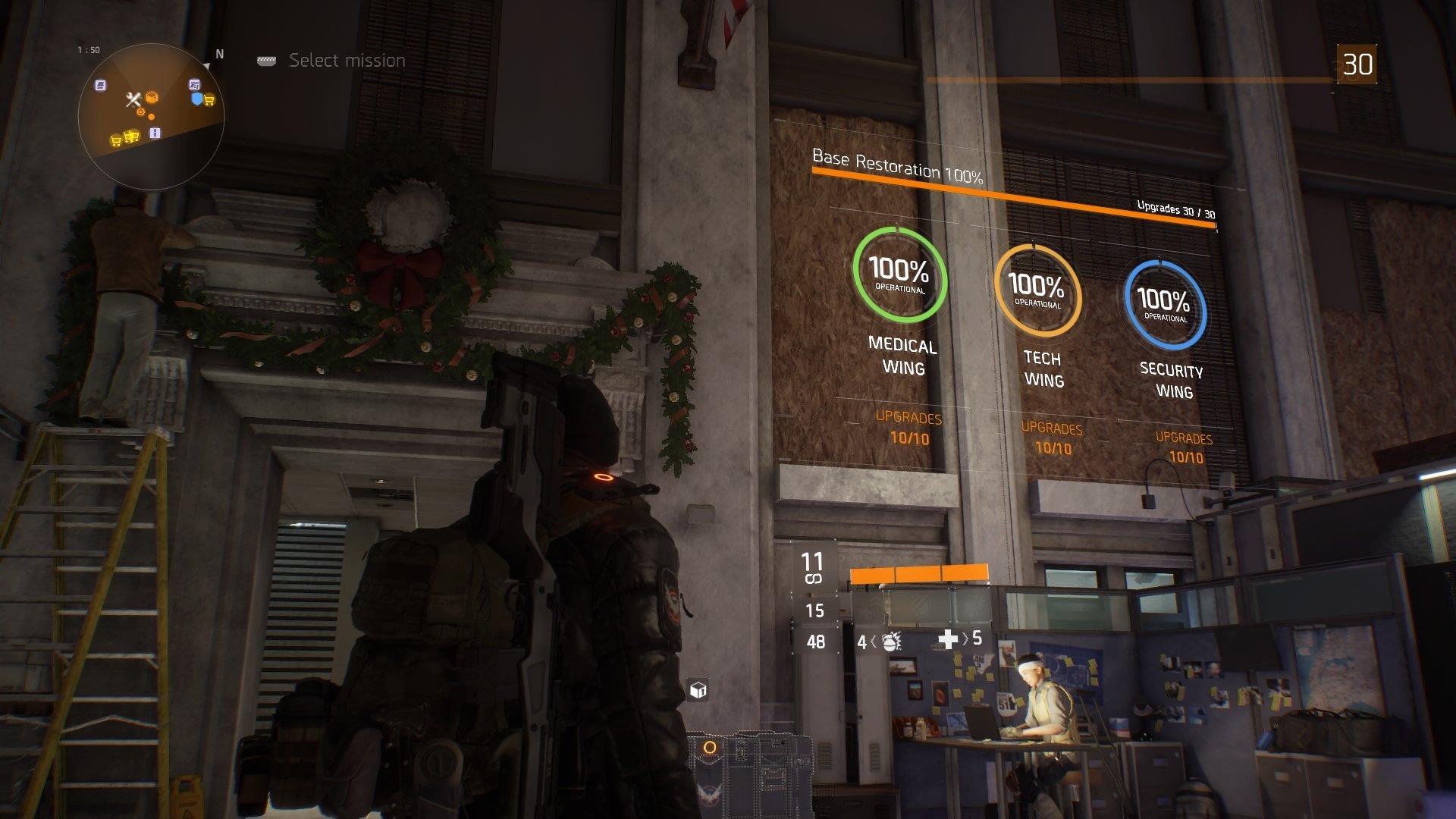
With such an incredible level of detail put into the environment it was surprising to find out that the game offers very limited presets at the character customization screen. There are only eight facial options available for each male and female characters and the customization for those characters are lacking too. Accessories for example only has one submenu.
That submenu is ‘Piercings & Glasses’ which gives five different piercing options and four pairs of sunglasses. Players can only pick one option from that list which limits the ability of the player to create a truly unique character. With such a focus on being an open world social experience the lack of customization made the game feel like there was an army of clones roaming around the safe houses of Manhattan.
The ‘Base of Operations’ is located in the old Post Office building and contains three wings, the Security Wing, the Tech Wing, and the Medical Wing. There are ten upgrades per wing and every time a wing is upgraded it adds a new perk and talent to the arsenal. The base really has a living world feel to it as every time the player upgrades a section, part of the base goes from an empty area of overturned tables and chairs to a cleaned up working section that’s filled with NPCs. The players can be seen making a direct impact to improve this world.
The world in The Division is seamless. There are no loading screens as players leave their base, head into the Dark Zone, or visit another safe house. The only time load screens are present are when players want to fast travel locations on their map. Otherwise players can run from one place to another on the map and never see a loading screen.
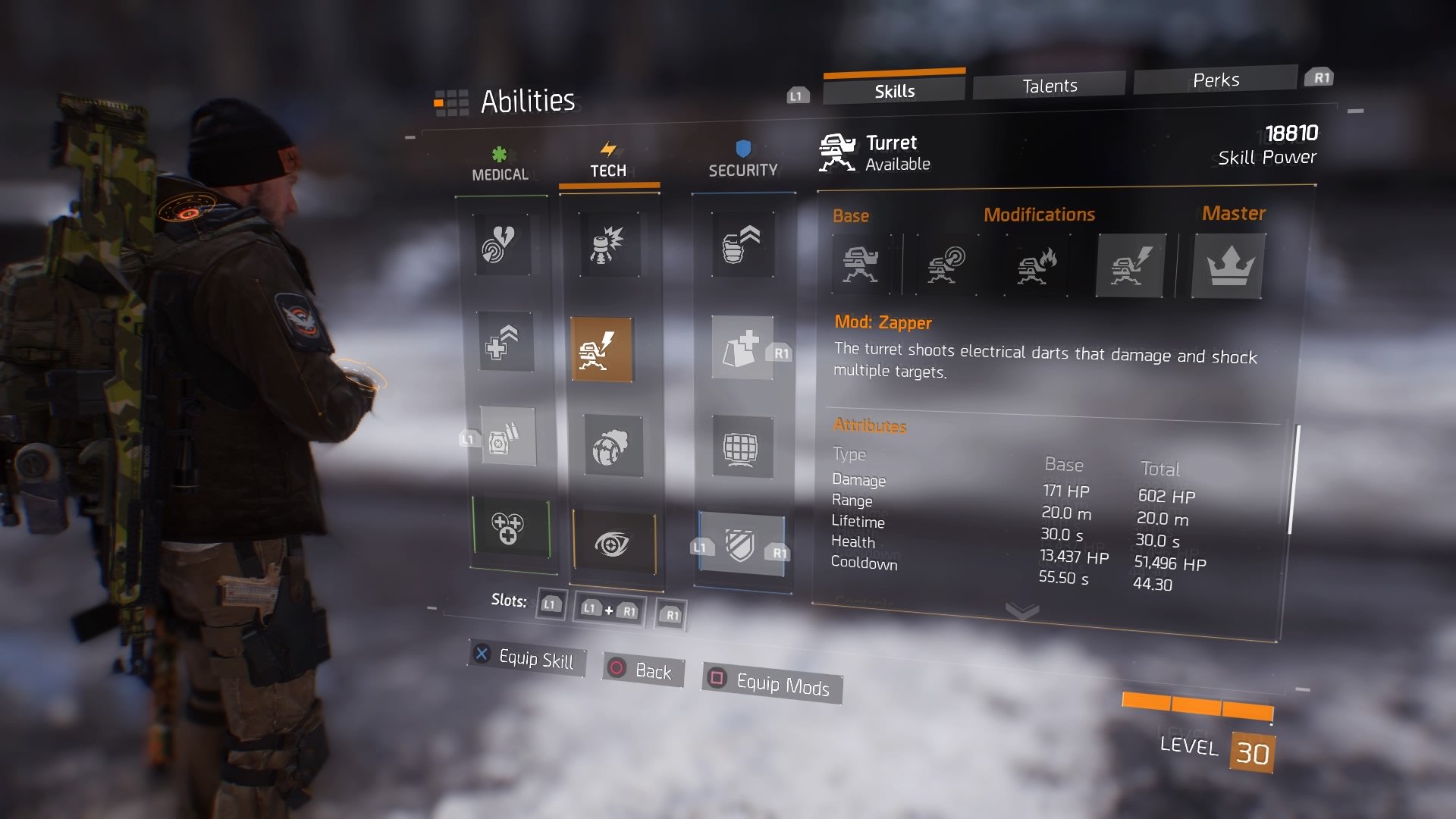
Since The Division is a third-person cover based shooter players engage most of the enemies from behind cover. The cover mechanics are done well and players can attack the enemies through different strategies with weapons and skill loadouts. There are three types of skills, Medical which focuses on healing, Tech which focuses on gadgets, and Security which focuses on protection. Each ability brings a different dynamic to the mix and players can customize their loadout to fit their play style.
There are four factions that have taken control over Manhattan, the Rioters, Cleaners, Rikers, and the Last Man Battalion. Each faction feels different in the way they look and how they react to conflict. Rioters tend to stand awkwardly in the streets while Rikers have shotgun guys that run straight up to the agents. The LMB uses military tactics when engaging the agents and will try to flank or rush when they sense that players might be at a disadvantage.
The main part of the city is separated into fifteen districts and each district has a safe house where players can restock, check vendors for their supply, and talk to JTF Agents to get side missions. The side missions within a zone have variety to them and the agents that give out the side missions all have different personalities which creates a fun change of pace throughout the game. The issue with side missions as a whole is that each district carries the same missions which makes the gameplay start to feel repetitive by the time players get to the East side of the map.
As an example, each zone will have a bounty for a bad guy that players have to take out, a supply drop that players need to defend before the JTF get there, and a Comm Relay that needs to be repaired. Many of the side missions are beefed up Encounters that reward players with a good amount of XP. Encounters are smaller versions of the side missions which offer Medical, Tech, or Security points which is used to upgrade the Base of Operations.
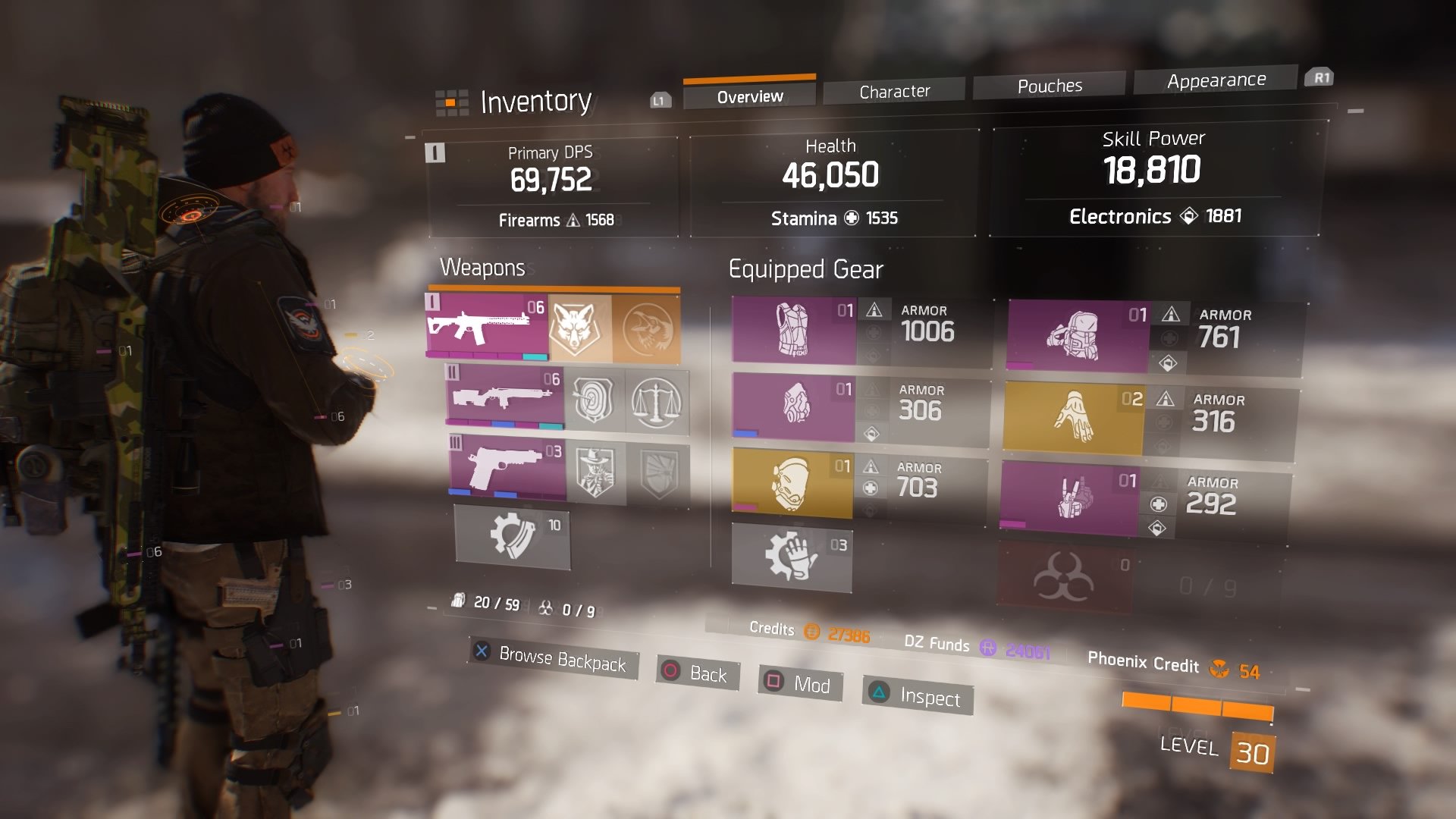
The Dark Zone is truly a ruthless place. Before the latest patch players would relatively keep to themselves in the ‘Player versus Player versus Enemy’ zone. They would focus on defeating bosses and extracting loot while avoiding going ‘Rogue’ which is when a player attacks another player to steal his or her loot.
In the latest update, Ubisoft dropped the amount of credits players lose if they die while being Rogue and increased the credits gained for surviving Rogue status. The result is that the amount of Rogues in the Dark Zone has only increased. This makes for a much more frustrating and rewarding experience as more players steal loot from other players.
When talking about endgame content Ubisoft really focused on the Dark Zone as a place where players can get the best loot, but another source of endgame gear is by earning Phoenix Credits in the Daily Missions. Two Hard missions and one Challenging mission will show up every day on the map. Daily Missions will give Phoenix Credits to players which can then be used to purchase high level gear from the vendor in the Tech Wing. Players can also purchase high level blueprints to craft High-End weapons and armor.
In the race to level 30 there’s not really much to the RPG element other than getting better guns and gear to do more damage, but once at level 30 things begin to change. Stats on armor become more important and the chance to re-roll through Recalibration is a big help. Ubisoft is smart by including this into their system because it gives players a chance of customization to how they want to play it.
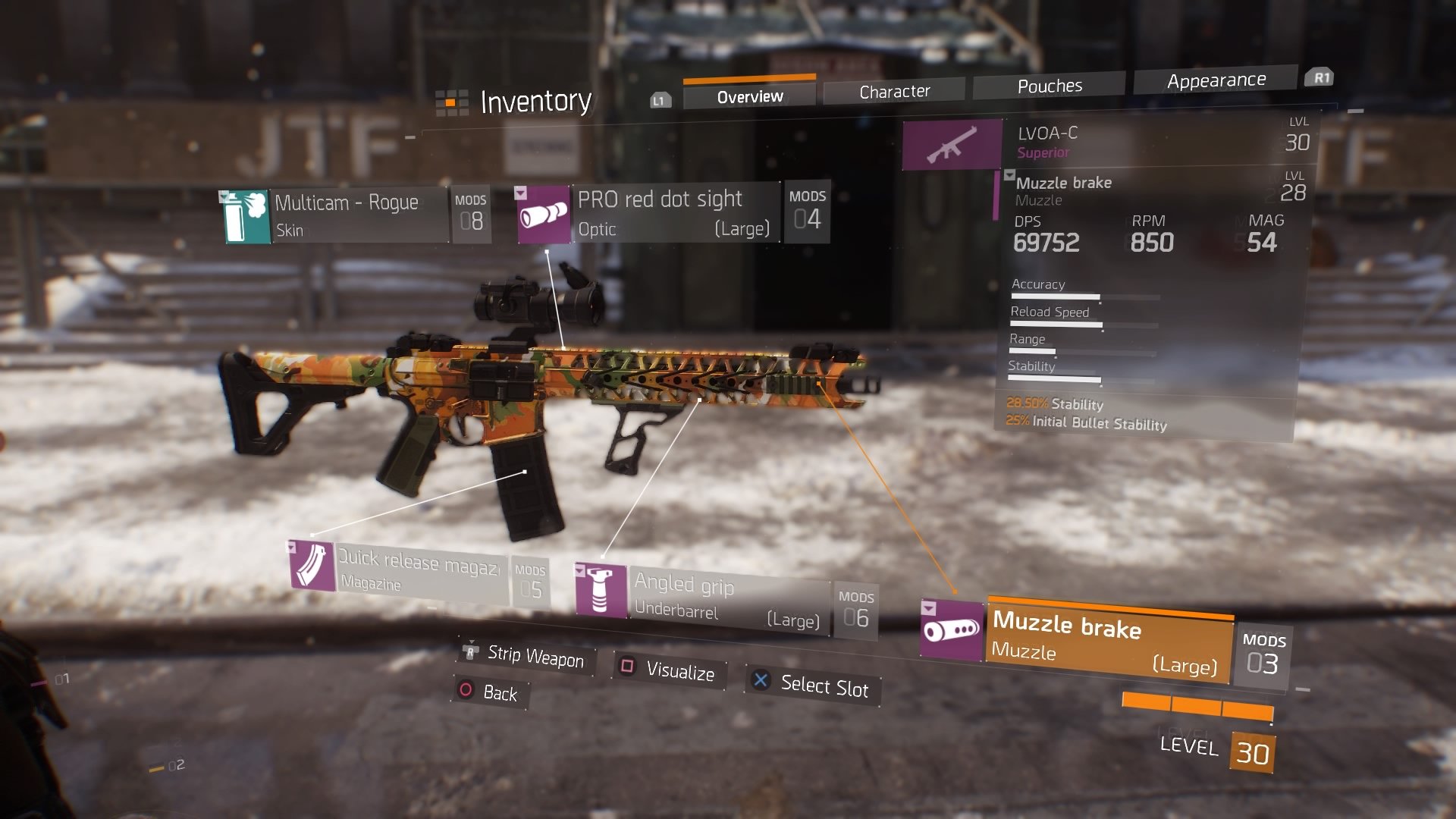
One issue that has come up with the customization of the game is the lack of a preview feature with the weapons, attachments, skins, and clothing. After a while players can figure out what’s the difference between a Classic M1A, Socom M1A, and First Wave M1A, but before players purchased these items it would be great to be able to preview them. The same goes for attachments even though most attachments will be used for the stats they add to the gun.
One other issue is with the clothing vendor in the Base of Operations. The clothing vendor sells one weapon skin and one piece of clothing per category per day. Once again, It would be great to have the option of previewing those items before spending currency to purchase them.
The biggest issue that The Division runs into is the ability to play with friends online. A game that touts the feature of creating a place where gamers can get together and crush the blight that terrorizes Manhattan should let all friends play together, but realistically they can’t. If friends are more than a couple levels apart the game is almost unplayable together. Gamers who are too far behind see skulls above enemies’ heads where the level number should be.
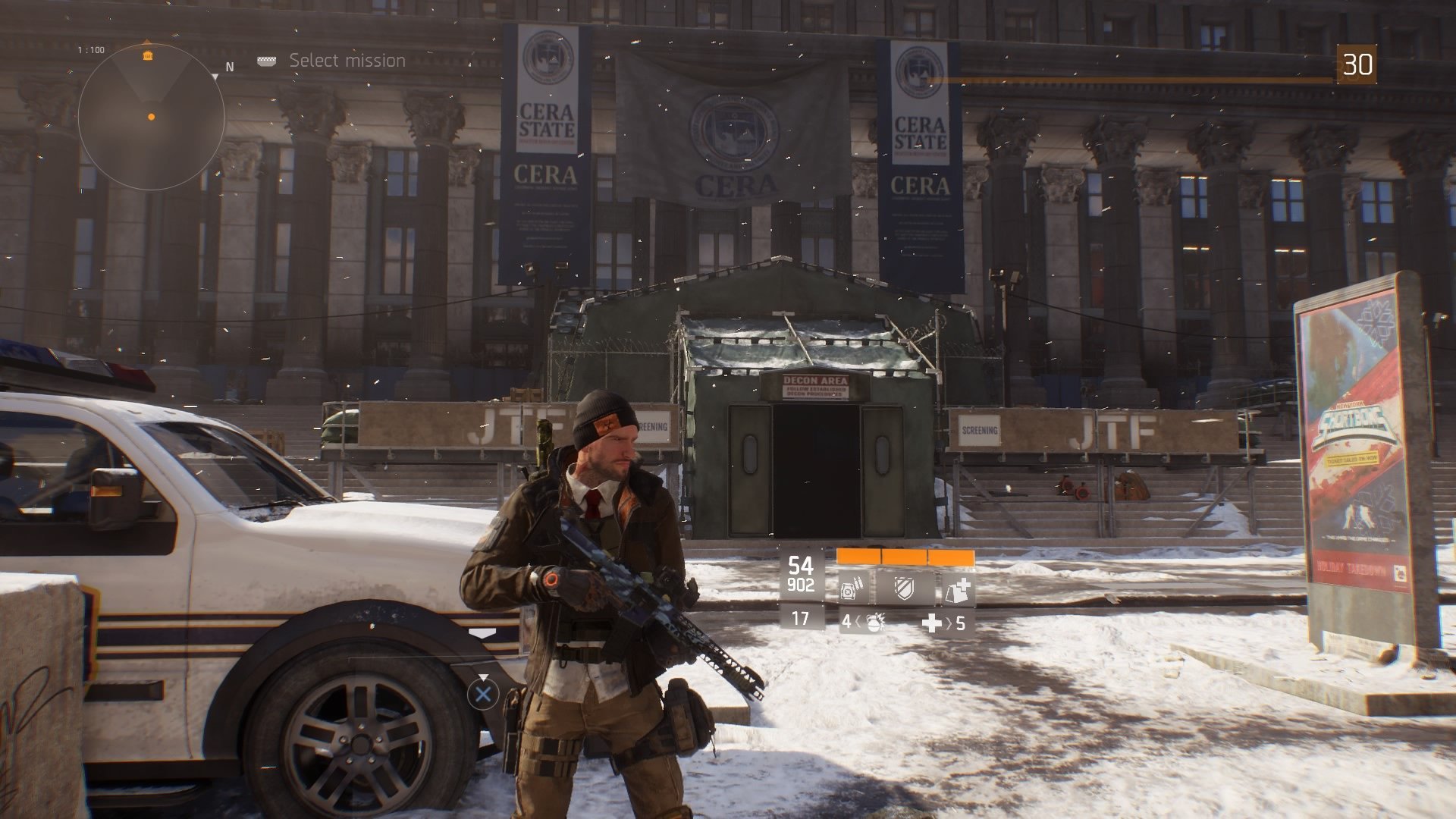
Ubisoft tried to combat this disparity by having enemies spawn five levels below the highest player in the group. This slightly buffs the level gap, but there’s still enough of a gap that lower level output is still almost nothing and friends still die after getting hit by one bullet.
It’s only a matter of time before players get to level 30 and are able to play with other friends who are at that level, but that’s if they make it to the level cap before giving up on the game. The game really needs to take into account the level gamers are playing at and adjust the enemies and the damage output so that more players can play together.
Overall, The Division is a solid game with great visuals, an in-depth RPG system, and a great PvPvE area with the Dark Zone. Even with the frustration of the level gap with friends, the lack of player creation, and the inability to preview gear before purchasing, this third-person open world RPG will bring hours of fun to those who brave the fight against anarchy and chaos.
Score: 8/10
Great. Fun to play and easily recommendable, but has a few minor flaws or fails to “push” the genre forward. This game was reviewed on a PlayStation 4 console.

